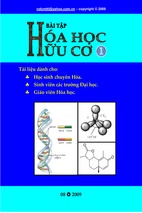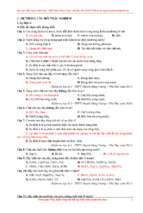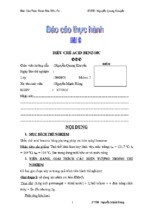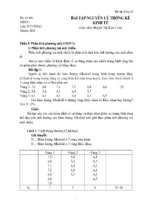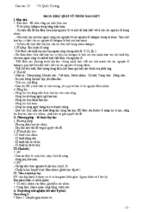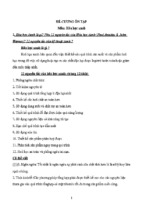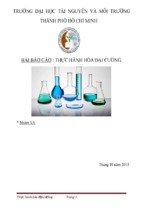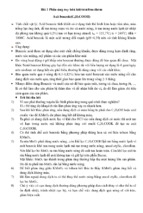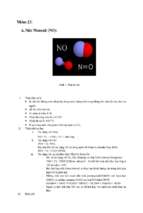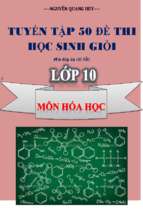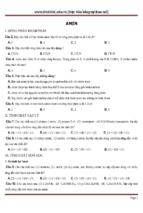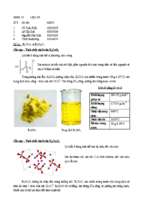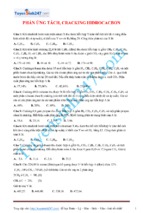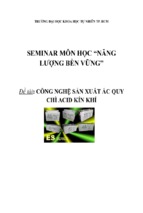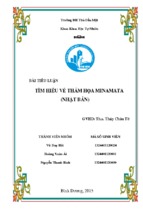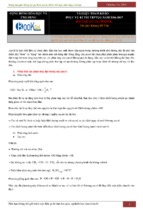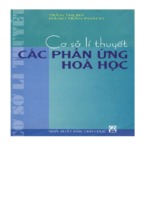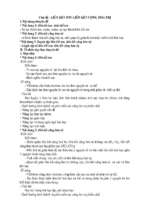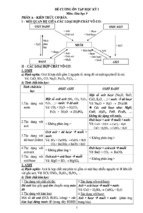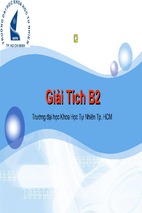The Organic Chem Lab Survival Manual A Student's Guide to Techniques, 8th Edition - James W. Zubrick
JWCL225_fm_i-xviii.indd Page ii 10/30/09 2:17:12 PM user-s164 /Users/user-s164/Desktop/Subhash 30:10/...
JWCL225_fm_i-xviii.indd Page i 10/30/09 2:17:12 PM user-s164 /Users/user-s164/Desktop/Subhash 30:10/...
THE ORGANIC
CHEM LAB
SURVIVAL MANUAL
JWCL225_fm_i-xviii.indd Page ii 10/30/09 2:17:12 PM user-s164 /Users/user-s164/Desktop/Subhash 30:10/...
JWCL225_fm_i-xviii.indd Page iii 10/30/09 2:17:12 PM user-s164 /Users/user-s164/Desktop/Subhash 30:10/...
EIGHTH EDITION
THE ORGANIC
CHEM LAB
SURVIVAL MANUAL
A Student’s Guide to Techniques
JAMES W. ZUBRICK
Hudson Valley Community College
John Wiley & Sons, Inc.
JWCL225_fm_i-xviii.indd Page iv 10/30/09 2:17:12 PM user-s164 /Users/user-s164/Desktop/Subhash 30:10/...
For Anne and Zoë,
making the effort worthwhile.
Vice President and Publisher
Kaye Pace
Associate Publisher
Petra Recter
Editorial Program Assistant
Catherine Donovan
Production Services Manager
Dorothy Sinclair
Production Editor
Janet Foxman
Marketing Manager
Kristine Ruff
Creative Director
Harry Nolan
Senior Designer
Carole Anson
Cover Design
Wendy Lai
Illustration Editor
Anna Melhorn
Executive Media Editor
Thomas Kulesa
Production Services
Jean Nicolazzo/Aptara®, Inc.
This book was set in 10/12 Times by Aptara®, Inc. and printed and bound by
Courier/Westford. The cover was printed by Courier/Westford.
This book is printed on acid-free paper. ⬁
Copyright © 2011, 2008, 2004, 2001 John Wiley & Sons, Inc. All rights reserved. No part of this
publication may be reproduced, stored in a retrieval system or transmitted in any form or by any means,
electronic, mechanical, photocopying, recording, scanning or otherwise, except as permitted under
Sections 107 or 108 of the 1976 United States Copyright Act, without either the prior written permission
of the Publisher, or authorization through payment of the appropriate per-copy fee to the Copyright
Clearance Center, Inc., 222 Rosewood Drive, Danvers, MA 01923, website www.copyright.com.
Requests to the Publisher for permission should be addressed to the Permissions Department,
John Wiley & Sons, Inc., 111 River Street, Hoboken, NJ 07030-5774, (201) 748-6011,
fax (201) 748-6008, website www.wiley.com/go/permissions.
Evaluation copies are provided to qualified academics and professionals for review purposes only,
for use in their courses during the next academic year. These copies are licensed and may not be sold or
transferred to a third party. Upon completion of the review period, please return the evaluation copy to
Wiley. Return instructions and a free-of-charge return shipping label are available at www.wiley.com/go/
returnlabel. Outside the United States, please contact your local representative.
Library of Congress Cataloging-in-Publication Data:
Zubrick, James W.
The organic chem lab survival manual : a student’s guide to techniques / James W. Zubrick. — 8th ed.
p. cm.
ISBN 978-0-470-49437-0 (pbk. : alk. paper)
1. Chemistry, Organic—Laboratory manuals. I. Title.
QD261.Z83 2010
547.0078—dc22
2009037069
ISBN 978-0-470-49437-0
Printed in the United States of America
10 9 8 7 6 5 4 3 2 1
JWCL225_fm_i-xviii.indd Page v 10/30/09 2:17:12 PM user-s164 /Users/user-s164/Desktop/Subhash 30:10/...
PREFACE TO THE
EIGHTH EDITION
This eighth edition of the Survival Manual again presents the basic techniques of the
organic chemistry laboratory, with an emphasis on doing the work correctly the first
time. As ever, I have relied on the comments of users and reviewers as a guide to the
changes and additions that accompany this eighth edition.
In this new edition, I have made a significant number of additions. I have
added to the section on laboratory safety, added a section on green chemistry, and
added coverage of planning a synthesis (Chapter 1). After all, if you have to plan
a new synthesis, or even modify an existing one, it would be better to incorporate
materials and techniques that are less harmful to the environment, create less waste,
and are safer to perform in general. Any stoichiometric calculations have also been
covered in the sections on notebook keeping (Chapter 2).
The sections on GC and HPLC (Chapters 32 and 33) have been updated in part
to reflect data capture and analysis by computer, rather than capture by chart recorder
and analysis by less automated means. The section on NMR (Chapter 35) now opens
with a presentation of the theoretical basis of the NMR experiment (much as the
section on IR does), and includes discussion of some of the consequences of higherbase-frequency instruments, how the FTNMR is developed, and a few new pieces of
general information that are especially suitable to the FTNMR experiment.
A section on VIS-UV spectroscopy has been added to the end of the chapter on
IR (Chapter 34), using the perhaps flimsy rationale that the instrumentation regimes
used in the two techniques have many common elements. A short introduction to
some theoretical aspects is followed by solid information both on scanning and CCD
instrumentation and on techniques of sample preparation, including the pitfalls of
choosing plastic, glass, or quartz cells and how to tell them apart.
Many of the chapters now have exercises. These range from direct, simple
questions that help to organize and codify the basic information, to open-ended
exercises that can require both a bit of research and a bit of thought, to openly
outrageous inquiries designed to drive home a point. While some questions have
many possible answers depending on your local laboratory setup, some guidance
on finding what the solutions might be can be found at www.wiley.com//college/
zubrick. My goal is to reinforce even further the safe and effective implementation
of techniques used in the organic chemistry laboratory.
I’d like to thank my reviewers, Scott Allen, University of Tampa; Peter T. Bell,
Tarleton State University; Steven M. Bonser, Millersville University; J. R. Dias,
University of Missouri–Kansas City; Maged Henary, Georgia State University; Syed
v
JWCL225_fm_i-xviii.indd Page vi 10/30/09 2:17:12 PM user-s164 /Users/user-s164/Desktop/Subhash 30:10/...
vi
PREFACE TO THE EIGHTH EDITION
Raziullah Hussaini, University of Louisville; Valerie Keller, University of Chicago;
DeeAnne Goodenough-Lashua, University of Notre Dame; Deborah Lieberman,
University of Cincinnati; Christopher J. Peeples, The University of Tulsa; Robert
Stockland, Bucknell University; and Bruce Toder, University of Rochester, for their
comments and suggestions, many of which have been incorporated.
Finally, I’d like to thank Petra Recter, Associate Publisher at John Wiley &
Sons, Inc., for her valuable comments and her encouragement in getting out this
edition, and Janet Foxman, Senior Production Editor, for seeing that this edition
of the Survival Manual looks as good as it does. A special thanks to Catherine
Donovan, who has helped to pilot this book through a number of editions, and is a
wizard in her own right, keeping all of this from flying apart.
J. W. Zubrick
Hudson Valley Community College
JWCL225_fm_i-xviii.indd Page vii 10/30/09 2:17:12 PM user-s164 /Users/user-s164/Desktop/Subhash 30:10/...
SOME NOTES ON STYLE
It is common to find instructors railing against poor usage and complaining that their
students cannot as much as write one clear, uncomplicated, communicative English
sentence. Rightly so. Yet I am astonished that the same people feel comfortable with
the long and awkward passive voice, the pompous “we” and the clumsy “one,” and
that damnable “the student,” to whom exercises are left as proofs. The constructions,
which appear in virtually all scientific texts, do not produce clear, uncomplicated,
communicative English sentences. And students do learn to write, in part, by following
example.
I do not go out of my way to boldly split infinitives, nor do I actively seek
prepositions to end sentences with. Yet by these constructions alone, I may be viewed
by some as aiding the decline in student’s ability to communicate.
E. B. White, in the second edition of The Elements of Style (Macmillan, New
York, 1972, p. 70), writes:
Years ago, students were warned not to end a sentence with a preposition; time,
of course, has softened that rigid decree. Not only is the preposition acceptable
at the end, sometimes it is more effective in that spot than anywhere else. “A
claw hammer, not an axe, was the tool he murdered her with.” This is preferable
to “A claw hammer, not an ax, was the tool with which he murdered her.”
Some infinitives seem to improve on being split, just as a stick of round
stovewood does. “I cannot bring myself to really like the fellow.” The sentence
is relaxed, the meaning is clear, the violation is harmless and scarcely perceptible.
Put the other way, the sentence becomes stiff, needlessly formal. A matter
of ear.
We should all write as poorly as White.
With the aid of William Strunk and E. B. White in The Elements of Style, and
that of William Zinsser in On Writing Well and Rudolph Flesch in The ABC of Style,
I have tried to follow some principles of technical communication still being ignored
in scientific texts: use the first person, put yourself in the reader’s place, and—the
best for last—use the active voice and a personal subject.
The following product names belong to the respective manufacturers. Registered trademarks are indicated here, as appropriate; in the text, the symbol is omitted.
Büchi®
Corning®
Drierite®
Büchi Labortechnik, AG, Flawil, Switzerland
Corning Glass Works, Corning, New York
W.A. Hammond Drierite Company, Xenia, Ohio
vii
JWCL225_fm_i-xviii.indd Page viii 10/30/09 2:17:12 PM user-s164 /Users/user-s164/Desktop/Subhash 30:10/...
viii
SOME NOTES ON STYLE
Fisher-Johns®
Kimwipe®
Luer-Lok®
Mel-Temp®
Millipore®
Swagelok®
Teflon®
Variac®
Fisher Scientific Company, Pittsburgh, Pennsylvania
Kimberly-Clark Corporation, Neenah, Wisconsin
Becton, Dickinson and Company, Rutherford, New Jersey
Laboratory Devices, Cambridge, Massachusetts
Millipore Corporation, Bedford, Massachusetts
Crawford Fitting Company, Solon, Ohio
E.I. DuPont de Nemours & Company, Wilmington,
Delaware
General Radio Company, Concord, Massachusetts
JWCL225_fm_i-xviii.indd Page ix 10/30/09 2:17:12 PM user-s164 /Users/user-s164/Desktop/Subhash 30:10/...
CONTENTS
CHAPTER 1
SAFETY FIRST, LAST, AND ALWAYS
Accidents Will Not Happen 5
Disposing of Waste 5
Mixed Waste 7
Material Safety Data Sheet (MSDS) 8
Green Chemistry and Planning an Organic Synthesis
Exercises 10
KEEPING A NOTEBOOK
11
A Technique Experiment 12
Notebook Notes 13
A Synthesis Experiment 13
Notebook Notes 13
Calculation of Percent Yield (Not Yeild!)
Estimation Is Your Friend 25
The Acid Test 25
Notebook Mortal Sin 25
Exercises 26
23
CHAPTER 2
CHAPTER 3
INTERPRETING A HANDBOOK
1
9
27
CRC Handbook 28
Entry: 1-Bromobutane 28
Entry: Benzoic Acid 29
Lange’s 31
Entry: 1-Bromobutane 31
Entry: Benzoic Acid 31
Merck Index 31
Entry: 1-Bromobutane 33
Entry: Benzoic Acid 34
There’s a CD 34
The Aldrich Catalog 35
Entry: 1-Bromobutane 35
Entry: Benzoic Acid 36
Not Clear–Clear? 36
Info on the Internet 37
Exercises 37
ix
JWCL225_fm_i-xviii.indd Page x 10/30/09 2:17:13 PM user-s164 /Users/user-s164/Desktop/Subhash 30:10/...
x
CONTENTS
CHAPTER 4
JOINTWARE
38
Stoppers with Only One Number 39
Another Episode of Love of Laboratory 40
Hall of Blunders and Things Not Quite Right
Round-Bottom Flasks 42
Columns and Condensers 43
The Adapter with Lots of Names 43
Forgetting the Glass 45
Inserting Adapter Upside Down 45
Inserting Adapter Upside Down sans Glass
The O-Ring and Cap Branch Out 46
Greasing the Joints 46
To Grease or Not to Grease 47
Preparation of the Joints 47
Into the Grease Pit 47
Storing Stuff and Sticking Stoppers 48
Corking a Vessel 48
The Cork Press 49
CHAPTER 5
MICROSCALE JOINTWARE
42
46
50
Microscale: A Few Words 51
Uh-Oh Rings 51
The O-Ring Cap Seal 51
Skinny Apparatus 51
Not-So-Skinny Apparatus 52
Sizing Up the Situation 52
Why I Don’t Really Know How Vacuum-Tight These Seals Are
The Comical Vial (That’s Conical!) 54
The Conical Vial as Vial 55
Packaging Oops 55
Tare to the Analytical Balance 55
The Electronic Analytical Balance 56
Heating These Vials 56
The Microscale Drying Tube 57
Gas Collection Apparatus 58
Generating the Gas 59
Isolating the Product 61
CHAPTER 6
OTHER INTERESTING EQUIPMENT
Funnels, and Beakers, and Flasks—Oh My! 63
The Flexible Double-Ended Stainless Steel Spatula
62
63
54
JWCL225_fm_i-xviii.indd Page xi 10/30/09 2:17:13 PM user-s164 /Users/user-s164/Desktop/Subhash 30:10/...
CONTENTS
CHAPTER 7
PIPET TIPS
66
Pre-Preparing Pasteur Pipets
Calibration 68
Operation 68
Amelioration 68
Pipet Cutting 70
Pipet Filtering—Liquids 70
Pipet Filtering—Solids 71
CHAPTER 8
SYRINGES, NEEDLES, AND SEPTA
The Rubber Septum
CHAPTER 9
67
73
75
CLEAN AND DRY
77
Drying Your Glassware When You Don’t Need To 78
Drying Your Glassware When You Do Need To 79
CHAPTER 10
DRYING AGENTS
80
Typical Drying Agents 81
Using a Drying Agent 82
Following Directions and Losing Product Anyway 82
Drying Agents: Microscale 83
Drying in Stages: The Capacity and Efficiency of Drying Agents
Exercises 83
CHAPTER 11
ON PRODUCTS
Solid Product Problems 85
Liquid Product Problems 85
The Sample Vial 85
Hold It! Don’t Touch That Vial
CHAPTER 12
84
86
THE MELTING-POINT EXPERIMENT
Sample Preparation 88
Loading the Melting-Point Tube 89
Closing Off Melting-Point Tubes 90
Melting-Point Hints 90
The Mel-Temp Apparatus 91
Operation of the Mel-Temp Apparatus 92
The Fisher-Johns Apparatus 93
Operation of the Fisher-Johns Apparatus 94
The Thomas-Hoover Apparatus 95
Operation of the Thomas-Hoover Apparatus
97
87
83
xi
JWCL225_fm_i-xviii.indd Page xii 10/30/09 2:17:13 PM user-s164 /Users/user-s164/Desktop/Subhash 30:10/...
xii
CONTENTS
Using the Thiele Tube 99
Cleaning the Tube 100
Getting the Sample Ready 101
Dunking the Melting-Point Tube
Heating the Sample 103
Exercises 103
CHAPTER 13
102
RECRYSTALLIZATION
104
Finding a Good Solvent 105
General Guidelines for a Recrystallization 106
Gravity Filtration 107
The Buchner Funnel and Filter Flask 110
Just a Note 113
The Hirsch Funnel and Friends 113
Activated Charcoal 114
The Water Aspirator: A Vacuum Source 114
The Water Trap 115
Working with a Mixed-Solvent System—The Good Part
The Ethanol–Water System 116
A Mixed-Solvent System—The Bad Part 116
Salting Out 117
World-Famous Fan-Folded Fluted Paper 118
Exercises 119
CHAPTER 14
RECRYSTALLIZATION: MICROSCALE
Isolating the Crystals 121
Craig Tube Filtration 122
Centrifuging the Craig Tube
Getting the Crystals Out
CHAPTER 15
124
125
EXTRACTION AND WASHING
127
Never-Ever Land 128
Starting an Extraction 129
Dutch Uncle Advice 130
The Separatory Funnel 131
The Stopper 131
The Glass Stopcock 131
The Teflon Stopcock 132
How to Extract and Wash What 134
The Road to Recovery—Back-Extraction 135
A Sample Extraction 136
Performing an Extraction or Washing 137
Extraction Hints 139
Exercises 140
115
120
JWCL225_fm_i-xviii.indd Page xiii 10/30/09 2:17:13 PM user-s164 /Users/user-s164/Desktop/Subhash 30:10/...
CONTENTS
CHAPTER 16
EXTRACTION AND WASHING: MICROSCALE
Mixing 142
Separation: Removing the Bottom Layer 142
Separation: Removing the Top Layer 143
Separation: Removing Both Layers 144
CHAPTER 17
SOURCES OF HEAT
145
Boiling Stones 146
The Steam Bath 146
The Bunsen Burner 147
Burner Hints 149
The Heating Mantle 150
Proportional Heaters and Stepless Controllers
Exercise 153
CHAPTER 18
CLAMPS AND CLAMPING
Clamping a Distillation Setup
Clipping a Distillation Setup
CHAPTER 19
152
154
157
161
DISTILLATION
164
Distillation Notes 165
Class 1: Simple Distillation 166
Sources of Heat 166
The Three-Way Adapter 167
The Distilling Flask 167
The Thermometer Adapter 168
The Ubiquitous Clamp 168
The Thermometer 168
The Condenser 168
The Vacuum Adapter 168
The Receiving Flask 169
The Ice Bath 169
The Distillation Example 169
The Distillation Mistake 170
Class 2: Vacuum Distillation 170
Pressure Measurement 171
Manometer Hints 173
Leaks 173
Pressure and Temperature Corrections
Vacuum Distillation Notes 177
Class 3: Fractional Distillation 178
How This Works 178
Fractional Distillation Notes 180
173
141
xiii
JWCL225_fm_i-xviii.indd Page xiv 10/30/09 2:17:13 PM user-s164 /Users/user-s164/Desktop/Subhash 30:10/...
xiv
CONTENTS
Azeotropes 183
Class 4: Steam Distillation 183
External Steam Distillation 184
Internal Steam Distillation 185
Steam Distillation Notes 185
Simulated Bulb-to-Bulb Distillation: Fakelrohr
Exercises 189
CHAPTER 20
MICROSCALE DISTILLATION
Like the Big Guy 191
Class 1: Simple Distillation 191
Class 2: Vacuum Distillation 191
Class 3: Fractional Distillation 191
Class 4: Steam Distillation 191
Microscale Distillation II: The Hickman Still
The Hickman Still Setup 192
Hickman Still Heating 193
Recovering Your Product 193
CHAPTER 21
Exercises
187
190
192
THE ROTARY EVAPORATOR
195
199
CHAPTER 22
REFLUX AND ADDITION
200
Standard Reflux 201
A Dry Reflux 202
Addition and Reflux 204
Funnel Fun 204
How to Set Up 205
Exercise 207
CHAPTER 23
REFLUX: MICROSCALE
Addition and Reflux: Microscale
208
209
CHAPTER 24
SUBLIMATION
CHAPTER 25
MICROSCALE BOILING POINT
Microscale Boiling Point 215
Ultramicroscale Boiling Point
211
216
214
JWCL225_fm_i-xviii.indd Page xv 10/30/09 2:17:13 PM user-s164 /Users/user-s164/Desktop/Subhash 30:10/...
CONTENTS
CHAPTER 26
CHROMATOGRAPHY: SOME GENERALITIES
Adsorbents 219
Separation or Development
The Eluatropic Series 219
CHAPTER 27
THIN-LAYER CHROMATOGRAPHY: TLC
Preparation of TLC Plates
Pre-prepared TLC Plates
The Plate Spotter 224
Spotting the Plates 225
Developing a Plate 226
Visualization 228
Interpretation 229
Multiple Spotting 231
Cospotting 231
Other TLC Problems 233
Preparative TLC 233
Exercises 235
CHAPTER 28
219
223
224
WET-COLUMN CHROMATOGRAPHY
Preparing the Column 237
Compounds on the Column 239
Visualization and Collection 240
Wet-Column Chromatography: Microscale
Flash Chromatography 243
Microscale Flash Chromatography 243
Exercises 243
CHAPTER 29
REFRACTOMETRY
244
GAS CHROMATOGRAPHY
The Mobile Phase: Gas 251
GC Sample Preparation 252
GC Sample Introduction 252
Sample in the Column 254
236
241
The Abbé Refractometer 245
Before Using the Abbé Refractometer: A Little Practice
Using the Abbé Refractometer 247
Refractometry Hints 249
CHAPTER 30
222
250
247
218
xv
JWCL225_fm_i-xviii.indd Page xvi 10/30/09 2:17:13 PM user-s164 /Users/user-s164/Desktop/Subhash 30:10/...
xvi
CONTENTS
Sample at the Detector 254
Electronic Interlude 256
Sample on the Computer 257
Parameters, Parameters 258
Gas Flow Rate 258
Temperature 258
Exercises 259
CHAPTER 31
HP LIQUID CHROMATOGRAPHY
260
The Mobile Phase: Liquid 261
A Bubble Trap 261
The Pump 263
The Pulse Dampener 264
HPLC Sample Preparation 265
HPLC Sample Introduction 266
Sample in the Column 267
Sample at the Detector 268
Sample on the Computer 269
Parameters, Parameters 269
Eluent Flow Rate 269
Temperature 269
Eluent Composition 269
Exercises 270
CHAPTER 32
INFRARED SPECTROSCOPY (AND A BIT OF UV-VIS,TOO)
Molecules as Balls on Springs 272
Ah, Quantum Mechanics 273
The Dissonant Oscillator 274
But Wait! There’s More 274
More Complicated Molecules 275
Correlation Tables to the Rescue 275
Troughs and Reciprocal Centimeters 275
Some Functional Group Analysis 281
A Systematic Interpretation 281
Infrared Sample Preparation 284
Liquid Samples 284
Solid Samples 285
Running the Spectrum 290
The Perkin-Elmer 710B IR 292
Using the Perkin-Elmer 710B 293
The 100% Control: An Important Aside
Calibration of the Spectrum 295
IR Spectra: The Finishing Touches 296
293
271
JWCL225_fm_i-xviii.indd Page xvii 10/30/09 2:17:14 PM user-s164 /Users/user-s164/Desktop/Subhash 30:10/...
CONTENTS
Interpreting IR Spectra—Finishing Touches 298
The Fourier Transform Infrared (FTIR) 298
The Optical System 298
And UV-VIS Too! 302
Electrons Get to Jump 302
Instrument Configuration 303
Source 304
Sample (and Reference) Cells 304
Solvents 304
Exercises 304
CHAPTER 33
NUCLEAR MAGNETIC RESONANCE
Nuclei Have Spin, Too 307
The Magnetic Catch 307
Everybody Line Up, Flip, and Relax
A More Sensitive Census 308
The Chemical Shift 309
T for One and Two 309
Be It Better Resolved . . . 310
Incredibly Basic FT-NMR 310
Liquid Sample Preparation 311
Solid Samples 313
Protonless Solvents 313
Deuterated Solvents 313
FT-NMR Sample Preparation 313
Some NMR Interpretation 314
The Zero Point 314
The Chemical Shift 316
Some Anisotropy 316
Spin–Spin Splitting 318
Integration 319
A Final Note 320
Exercises 320
CHAPTER 34
306
308
THEORY OF DISTILLATION
321
Class 1: Simple Distillation 322
Clausius and Clapeyron 324
Class 3: Fractional Distillation 325
A Hint from Dalton 325
Dalton and Raoult 326
A Little Algebra 326
Clausius and Clapeyron Meet Dalton and Raoult
Dalton Again 328
327
xvii
JWCL225_fm_i-xviii.indd Page xviii 11/5/09 3:32:05 PM users-064 /Users/users-064/Desktop/har 05:11:09
xviii
CONTENTS
What Does It All Mean? 329
Reality Intrudes I: Changing Composition 332
Reality Intrudes II: Nonequilibrium Conditions
Reality Intrudes III: Azeotropes 333
Other Deviations 335
Class 4: Steam Distillation 336
CHAPTER 35
INDEX
342
THEORY OF EXTRACTION
339
333
- Xem thêm -


